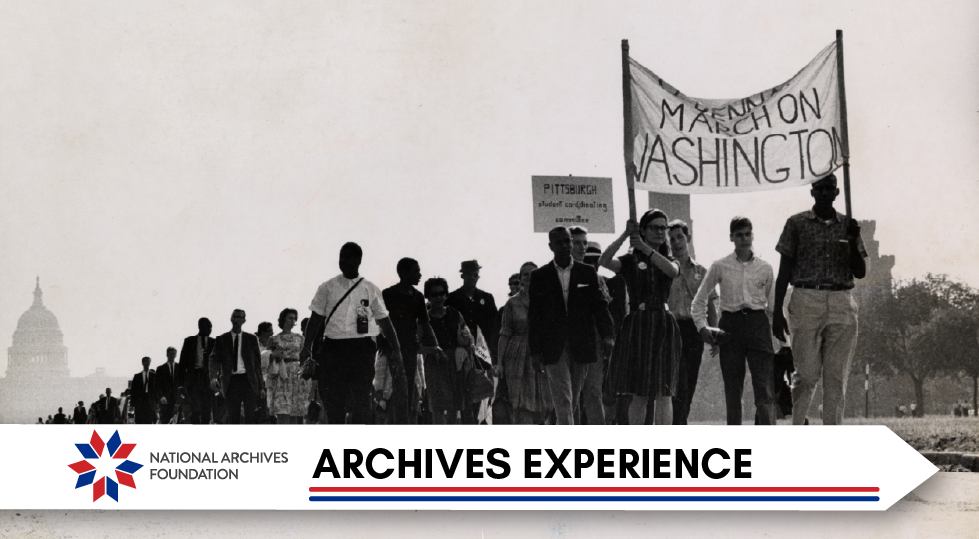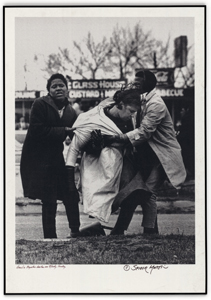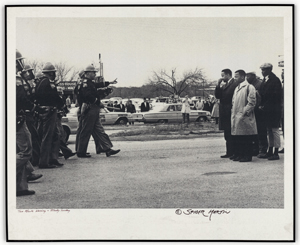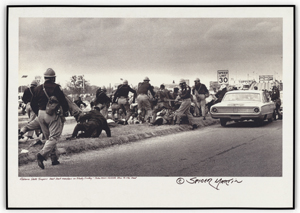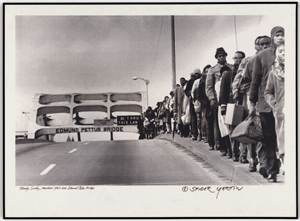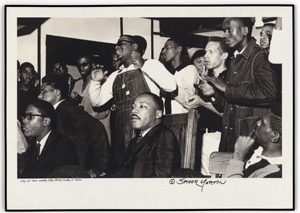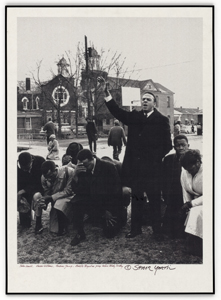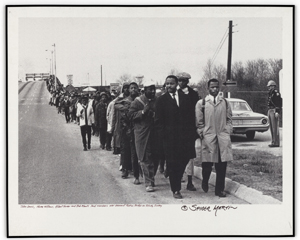Archives Experience Newsletter - June 11, 2023
Keep Marching On
Displayed in the National Archives’ Rotunda are the three founding documents we call “the Charters of Freedom.” These documents—the Declaration of Independence, the Constitution, and the Bill of Rights—earned that collective name because as the Founding Fathers signed them, they liberated themselves from the grip of absolute monarchy. But the Charters did not fulfill the promise of freedom for every group of Americans. Some had to – and continue to -work to achieve a More Perfect Union.
The story of the Black community in America is one of persistence and resilience. Even in the face of extreme violence, leaders of the Civil Rights Movement and everyday people who were fighting for their dignity pressed on.
Their voices would not be silenced. This week, we’re using the holdings of the National Archives to amplify their calls for freedom…
In this issue
History Snack
We’re celebrating Juneteenth and the 160th anniversary of the Emancipation Proclamation…
The Long Arc of Justice
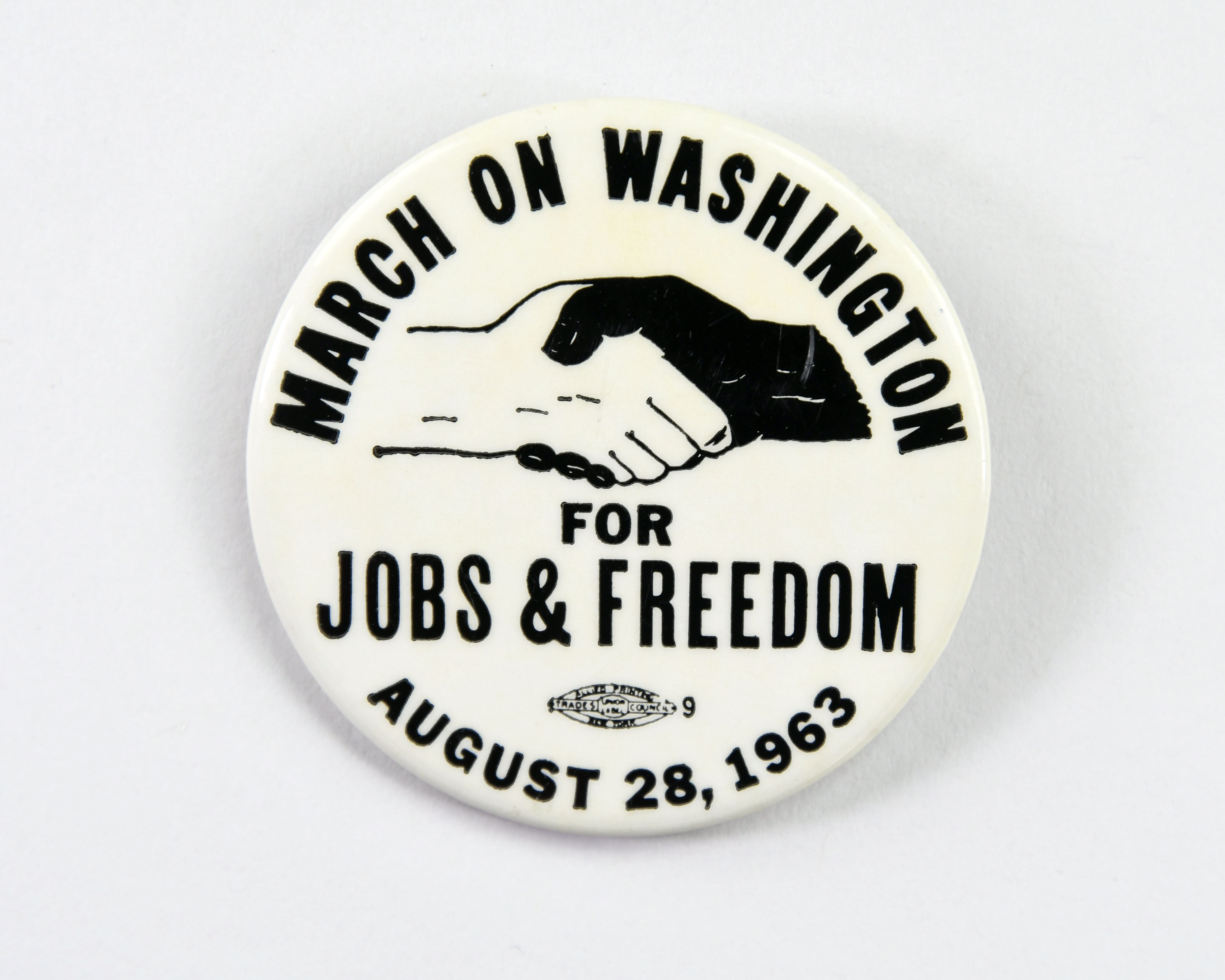
March on Washington commemorative button
National Archives Identifier: 219756252
Nonviolent resistance was the mantra of Dr. Martin Luther King Jr. and organizations like the Student Nonviolent Coordinating Committee (SNCC) and the Southern Christian Leadership Conference (SCLC). Sit-ins, boycotts, marches, and freedom rides all toed a delicate line; although they were all means of nonviolent protest, some of the methods still broke local segregation laws.
Not every action was met with state violence, especially in the early days of the Civil Rights Movement. The Montgomery Bus Boycott involved more than 40,000 of the city’s Black citizens running the transit system into a huge deficit by depriving it of paying customers. The 1963 March on Washington for Jobs and Freedom, where King gave his famous “I Have A Dream” speech, was in fact endorsed by President Kennedy, who tasked his brother, Attorney General ,Robert Kennedy, with security for the event. Although violence against protestors was one complaint on the marchers’ agenda, the actions of the 250,000 participants and the 3,000 press corps who covered them were peaceful.
National Archives Identifier: 193810
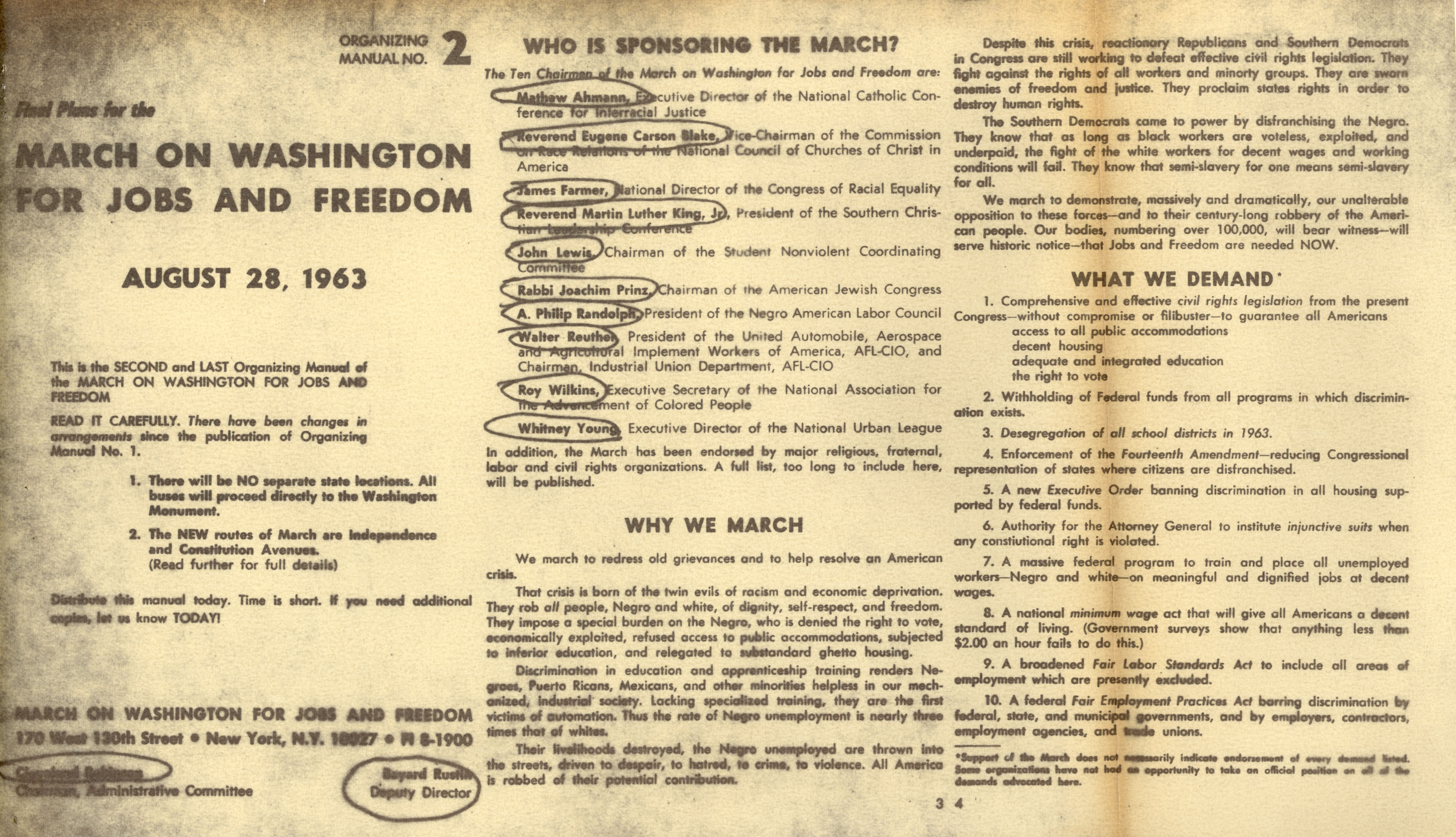
Final plans for the March on Washington
National Archives Identifier: 7479801

16th Street Baptist Church
Source: JFK Library
But this was not always the case. Just a few months earlier, in April 1963, the Birmingham Campaign resulted in hundreds of arrests and mass violence, chiefly on the orders of Birmingham’s now-infamous commissioner of public safety, Eugene “Bull” Connor. After days of boycotting downtown businesses, mass voter registrations, sit-ins in local restaurants and libraries, and kneel-ins at churches, the city had had enough. Its officials obtained an injunction to stop the protests, which King and others promptly disobeyed. This not only sent King to the Birmingham jail, where he wrote his renowned letter, but also led to an explosion of police violence. Connor ordered dogs and firehoses used against the protestors, some of whom were a group of children known as the “Children’s Crusade.”

Cartoon by Don Hesse sent to President Kennedy
Source: JFK Library
The Birmingham Campaign also fueled extrajudicial violence. On September 15, 1963, four members of a local Ku Klux Klan chapter planted 19 sticks of dynamite at the 16th Street Baptist Church in Birmingham. Choosing this church was no coincidence—it had a long history of serving as an organizing hotspot for the Civil Rights Movement. But on September 15, the victims were not Civil Rights leaders, but four little girls: Addie Mae Collins (14), Carol Denise McNair (11), Carole Rosamond Robertson (14), and Cynthia Dionne Wesley (14). The explosion also injured others and blew a seven-foot hole in the church’s wall and a crater five feet deep and two feet wide in the basement.

Modern Day
NARA’s Rediscovering Black History blog
The FBI concluded that in the immediate aftermath, there was not enough evidence to convict any single person of the bombing. But in 1977, one suspect received a life sentence related to another crime. Another suspect died in a car crash in 1994. After time allowed fear about speaking up to pass, witnesses came forward, which helped the FBI reopen the case in the mid-1990s. This led to two more suspects being indicted and sentenced to life in prison in May 2000. Justice was delayed, but served.

Call from Civil Rights leaders for federal intervention in Birmingham
Source: JFK Library

List of violence against Black people and families, page 1
Source: JFK Library

List of violence against Black people and families, page 2
Source: JFK Library
Interrupted
Although the horrors of Birmingham aired on national television to a sympathetic audience, the violence was far from over. Even after the passage of the Civil Rights Act of 1964, Black people still had trouble accessing the ballot box. A young activist named John Lewis singled out Selma, Alabama, located in a county where Black people were half the population but only 2% of registered voters. Previous efforts of both the SNCC and the SCLC to register voters were unsuccessful, especially after peaceful demonstrations resulted in thousands of arrests. At one protest on February 18, 1965, state troopers clubbed protestors and fatally shot a young man, Jimmie Lee Jackson, as he was protecting his mother. This incident was the catalyst for a 54-mile march to the governor’s office, routed over the Edmund Pettus Bridge.
In an event now known as “Bloody Sunday,” troopers met protestors on the bridge. Armed with tear gas, billy clubs, whips, and rubber tubing wrapped with barbed wire, they chased down and battered the protestors.
This event was well documented, and several of the photos are in the holdings of the National Archives. That it was recorded was also no accident. Weeks earlier, Dr. King had expressed anger at a Life magazine photographer who had abandoned his camera to aid protestors. “The world doesn’t know this happened because you didn’t photograph it,” King told photographer Flip Schulke. On Bloody Sunday, the cameras didn’t stop snapping.
That night, ABC was premiering the movie Judgment at Nuremberg, and some 50 million people had tuned in. But instead of broadcasting a film about the moral culpability of those who did not speak out against Nazi bigotry, the network interrupted the screening with a live news report about the violence at Selma. The violent parallels didn’t go unnoticed, and outrage swept the nation.
On March 21, the march was reauthorized, and a crowd of 25,000 finally reached the steps of the capitol building in Montgomery. Tragic as it was, Bloody Sunday fueled the passage of the Voting Rights Act of 1965, which ensured federal protection of the Black community’s vote.
An Unusual Collaboration
The Civil Rights Movement did not bring justice to every Black community. Oakland, California was a city of blue-collar workers, many of them Black workers who had migrated from the South to pursue promising factory jobs during World War II. But post-war segregation fueled Black unemployment, and the economic downturn increased the racial tension in a city that was half Black but had an all-White police force.
The police department earned a reputation for brutality, and department leadership recognized that it had caused a “legacy of bitterness.” As Black community leaders like Congressman Ron Dellmus rose to prominence, the community began to demand a more service-oriented approach from the local police force. Former Oakland Police Chief Charles Gain recognized that the previous approach to training fueled fear among the Black community and that something had to change.
This film, called The People and the Police, was released in 1974 to document the progress the Oakland Police Department was making with the community. George Hart, the chief of police after Gain’s initial reforms, described the change in attitude of the force from a “legalistic” approach to a “service-style” approach. Along with hiring Black officers and holding regular community meetings, the Oakland police department engaged in what was described as an “unusual” collaboration by beginning to work with sociology and behavioral researchers. An early idea involved tape recording interactions between police and citizens, which were used as training tools to instruct new officers in conflict de-escalation. The department called the recordings “invaluable.” (Starts at 10:05)
Another method employed was tracking violent interactions with citizens, and officers involved in altercations could sit with a panel of their fellow officers. Their peers could then question everything about the interaction: their colleagues’ words, tactics, mannerisms, and judgments were all fair game. The involved officer sometimes sat for questioning for as long as eight hours. At first, sessions were confidential, but then they began to be taped. While the panels were in use, they were voluntary, but no officer ever refused to participate. (Starts at 14:29)
One community member said, “This is one of the greatest things I’ve seen in Oakland in my 30 years here.” At the same meeting, Deputy Chief Thomas Donohue said, “It’s our responsibility to get out in the community, and we’ll be here if you want us….We’re going to take a more humanistic approach to policing.”
The People and the Police
(25 minutes 26 seconds)
National Archives Identifier: 12120





